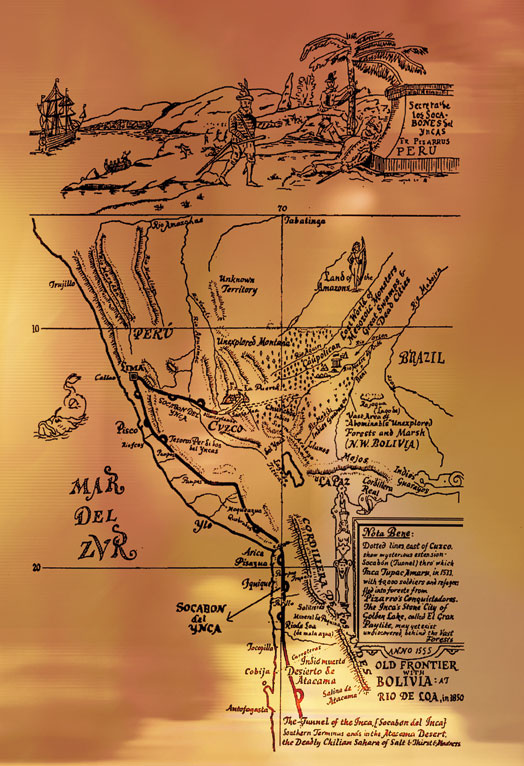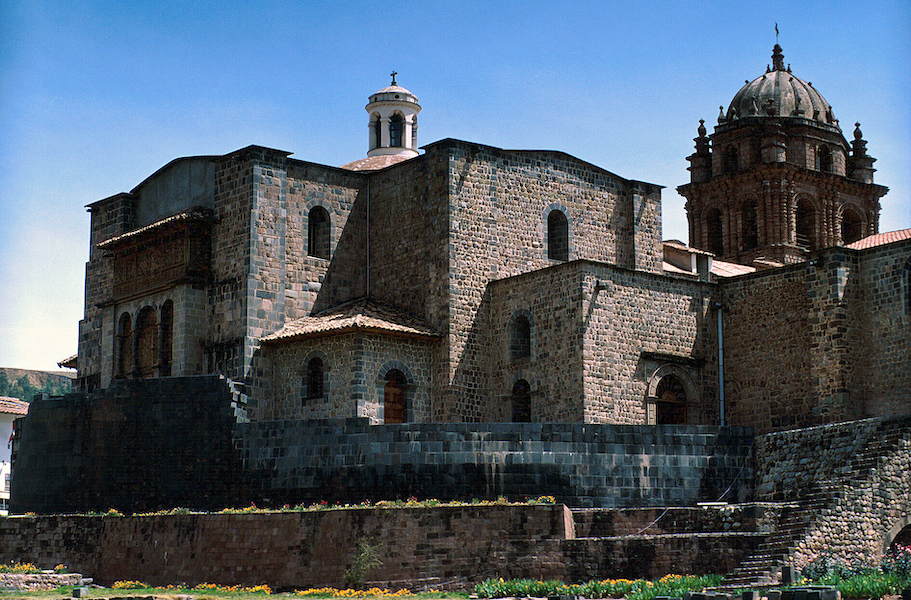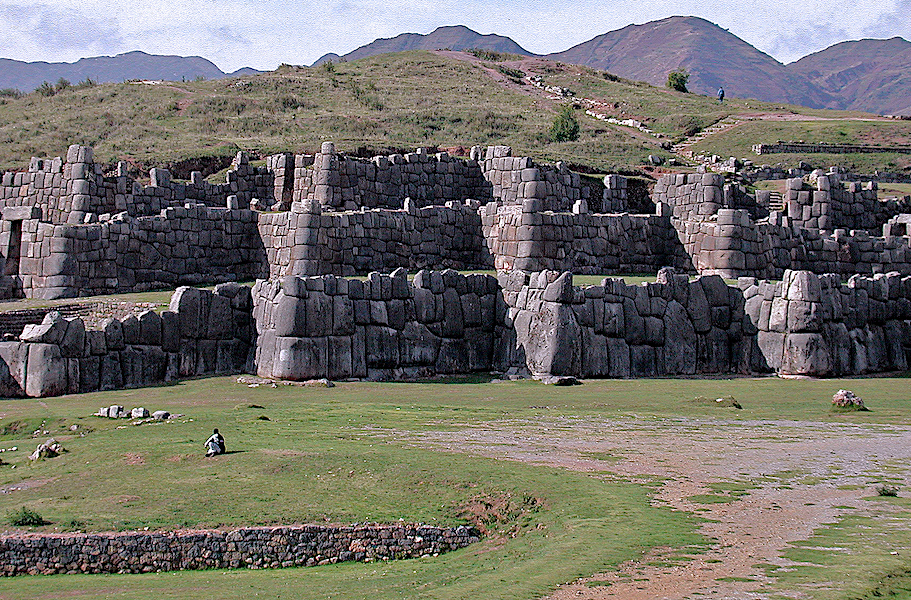One of the most disconcerting and ancient legends of the Andean cultures, is the one that refers to the existence of an extensive network of tunnels (“socabones” in old Spanish), built in times before the Incas, which cover a good part of the current Peruvian territory and lead to worlds of antediluvian origin hidden inside the Andes mountain range. The same legends and traditions assure that these tunnels start from Cusco (Navel of the World), as the central axis, towards the four directions of the Andean empire (Tahuantinsuyo), namely:
* Cajamarca in the Northwest * Tiahuanaco in the Southeast * Amazon Jungle in the Northeast * Atacama Desert in the Southwest
Conquerors, explorers, chroniclers, researchers and adventurers, from the
XVI century to our days, affirm that the Incas in the city of Cusco, used these tunnels for different
purposes and integrated some of their palaces and most important temples with them. There are many
reports that it was through these artificial galleries (known by the Quechua word, "chinkana", which
literally means labyrinth) how they outsmarted the Spanish conquerors, making disappear a good part
of the immeasurable riches of gold and silver that the twelve Inca dynasties had accumulated during his empire.
All the documents and stories transmitted that we have investigated from the time of Pizarro to the present
day, point indisputably and with conclusive evidence to two specific enclaves that would confirm the
existence of some important entrances to this immense network of tunnels used by the Incas: the walls of
Saqsaywaman , and the Temple of the Sun of the Incas - Koricancha (current Convent of Santo Domingo) in
Cusco, Peru.
Both archeology and official science, for the moment, have not investigated enough to unravel this mystery,
and what is even more important, rigorous and extensive excavations have not been carried out in the
precise places indicated by the ancient traditions.
The works and excavations carried out by Anselm Pi Rambla and his Bohic Ruz Explorer team in the current
Santo Domingo Convent and in the Saqsaywaman archaeological park confirm the existence of a tunnel
(chinkana) that starts from the Temple of the Sun (Koricancha) to inside the walls of Saqsaywaman and
connects according to all the chronicles with this immense network of tunnels that run through the
Peruvian Andes.


